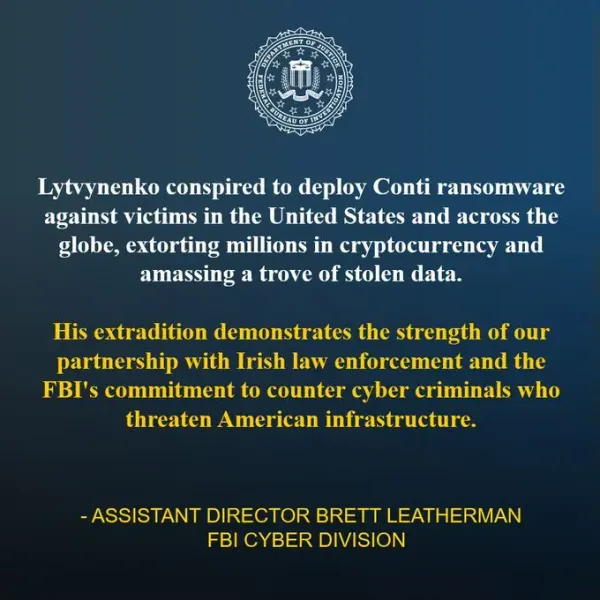FBI Issues Urgent Warning About 'The Com': A Growing Cybercrime Threat Targeting Youth

Bottom Line Up Front: The FBI has issued three critical public service announcements warning about "The Com," a sophisticated international cybercrime network composed primarily of minors aged 11-25 who engage in ransomware attacks, cryptocurrency theft, child exploitation, and real-world violence. With thousands of identified members operating across three specialized subgroups, this decentralized threat poses unprecedented risks to youth online and offline.

The Federal Bureau of Investigation has sounded the alarm about an increasingly dangerous online criminal ecosystem known as "The Com" (short for "The Community"), issuing multiple urgent warnings about a threat that has evolved far beyond traditional cybercrime. The FBI estimates thousands of individuals identify as current or recent members of The Com with varying levels of associated activity, making it one of the most significant youth-focused criminal networks law enforcement has encountered.
What Makes The Com Unique
Unlike conventional cybercrime organizations driven solely by financial motives, The Com represents a disturbing hybrid of digital criminality and real-world violence. The Com is a primarily English speaking, international, online ecosystem comprised of multiple interconnected networks whose members, many of whom are minors, engage in a variety of criminal violations. The network operates across popular platforms including Discord, Telegram, gaming sites, and social media, specifically targeting impressionable young people.
The motivations behind the criminal activity vary, but often fall within one of the following: financial gain, retaliation, ideology, sexual gratification, and notoriety. This multi-faceted motivation structure makes The Com particularly dangerous, as members are driven by factors beyond simple profit.

Escalating Sophistication and Reach
The FBI's warnings come as The Com has demonstrated alarming growth in both capability and scope. The sophistication of The Com criminal activity has grown over the last four years, with subjects employing increasingly complex methods to mask their identities, hide financial transactions, and launder money. Intelligence suggests the group has developed sophisticated understanding of legal systems, subjects involved with The Com have been known to intentionally recruit juveniles within the United States to perform criminal acts based on their misperception that juveniles cannot be pursued by the US criminal justice system.
The Three Criminal Subgroups
The Com operates through three distinct but interconnected branches, each specializing in different forms of criminal activity while maintaining collaborative relationships:
Hacker Com: The Technical Powerhouse
Hacker Com involves a broad community of technically sophisticated cyber criminals, some of whom are linked to ransomware-as-a service (RaaS) groups. This subset represents the most technically advanced wing of The Com, engaging in:
- Distributed denial-of-service (DDoS) attacks
- Ransomware deployment and attacks
- Cryptocurrency theft and money laundering
- SIM swapping operations
- Sale of government email accounts
- Malware development and distribution
- Computer network intrusions
Open-source information indicates Hacker Com groups are responsible for high-profile attacks and intrusions and have affiliations with ransomware organizations. Members of this group often showcase their criminal proceeds, with members screen share and brag about profits resulting from cryptocurrency thefts, which sometimes exceed millions of dollars.
The competitive nature within Hacker Com creates internal dangers. Cryptocurrency theft is the primary motivator for many Com actors, which often leads to internal conflicts and Com members themselves becoming the targets of SIM swaps and other cyber-related crime.
IRL Com: When Digital Crime Becomes Physical Violence
Perhaps the most alarming development is the emergence of In Real Life (IRL) Com, which bridges the gap between online criminality and physical violence. The intensification of these online conflicts has resulted in the emergence of a new layer of The Com known as In Real Life (IRL) Com, which includes subgroups that aim to facilitate real world acts of violence, oftentimes resulting from online conflicts.
IRL Com has evolved into what law enforcement describes as a violence-for-hire service, offering:
- Kidnapping services
- Physical assault and torture
- Armed robbery
- Shootings and stabbings
- Intimidation campaigns
In addition to SIM swapping and network intrusions, physical extortion is another means of stealing cryptocurrency. This can involve kidnapping, torture, threats of violence toward family members, and the use of firearms.
Extortion Com: Targeting Vulnerable Minors
The third branch focuses on the exploitation of children, representing one of the most disturbing aspects of The Com's operations. Extortion Com primarily involves the exploitation of children. Members extort minors, typically females, through threats of doxing, swatting, and IRL violence if member demands are not met.
This subgroup specifically targets vulnerable young people, using sophisticated psychological manipulation and threats to:
- Produce child sexual abuse material
- Create content depicting self-harm
- Generate videos showing animal cruelty
- Extract personal and financial information
The Swatting Connection
The deployment of swatting and hoax bomb threats to facilitate other illicit criminal activity is an underlying theme across subgroups within The Com. Swatting serves multiple purposes within The Com ecosystem:
- Distraction Tactic: Hacker Com groups use swatting to divert attention away from mobile devices or company networks during cryptocurrency thefts or corporate intrusions
- Internal Warfare: Members use swatting against rivals within the organization
- Entry Point: swatting is the most visible violation that occurs within The Com and often acts as the entry point into the larger Com ecosystem
Some Com subgroups offer swat-for-hire services via communication applications and social media platforms, making these dangerous tactics accessible to anyone willing to pay.
Recruitment and Target Demographics
The Com's recruitment strategy specifically targets vulnerable youth through platforms they frequent. Young people are often recruited on gaming sites and social media platforms based on shared interests, or through other members of The Com. Members of The Com typically range between 11 and 25 years old, with recruiters specifically seeking impressionable individuals who can be indoctrinated into the group's ideology.
The cross-pollination between subgroups creates a pipeline for escalating criminal behavior. Members may start their Com participation in IRL Com, make friends with other members in Hacker Com, develop the necessary cyber skills, and then begin participating in Hacker Com while continuing their association with IRL Com.
Connection to Major Cybercrime Operations
The Com's influence extends beyond its immediate network. The group has connections to Scattered Spider, a notorious cybercrime organization that has garnered headlines over the last two years for dozens of high profile cyberattacks on prominent companies like MGM Resorts and most recently caused concern this year with consecutive campaigns targeting the retail, insurance and airline industries.
Law Enforcement Response and Arrests
Recent law enforcement actions have begun to target The Com's leadership and operations. The Justice Department last month arrested and charged two alleged leaders of the child sextortion group 764, of which members are affiliated with The Com, for directing and distributing child sexual abuse material.
Research suggests that aggressive law enforcement response is having an impact. "There's really not a lot of them. You can throw them in jail. I'm seeing the crackdowns. I think they're very effective," she added. "I look at the reactions from the groups, and they calm down after they understand that there's consequences to behavior."
Protection Strategies and Recommendations
The FBI has issued comprehensive guidance for protecting against The Com's activities:
For Parents and Caregivers:
- Monitor children's online activity and discuss risks of engaging with strangers
- Watch for warning signs including sudden behavior changes, self-harm, isolation, or secretive online relationships
- Apply strict privacy settings on all social media accounts
- Enable multifactor authentication on financial accounts and sensitive applications
For Everyone:
- Avoid posting personal information online, including phone numbers, addresses, or cryptocurrency holdings
- Exercise caution when accepting friend requests from unknown individuals
- Never comply with extortion demands or provide money to online contacts
- Run regular searches of personal information to assess exposure levels
Immediate Response:
- Report suspicious activity immediately to authorities
- Retain all evidence including usernames, emails, photos, and communication records
- Contact account providers to secure compromised accounts
- Seek mental health support for victims
Reporting and Resources
The FBI emphasizes the critical importance of immediate reporting. Victims or those aware of Com-related activity should contact:
- FBI's Internet Crime Complaint Center: www.ic3.gov
- FBI Field Office: www.fbi.gov/contact-us/field-offices or 1-800-CALL-FBI (225-5324)
- National Center for Missing and Exploited Children: 1-800-THE-LOST or report.cybertip.org
- Emergency situations: Dial 9-1-1 immediately
For victims of exploitation, the National Center for Missing and Exploited Children offers "Take It Down," a free service helping remove inappropriate content involving minors from online platforms.
The Broader Implications
The emergence of The Com represents a fundamental shift in cybercrime, blending digital attacks with physical violence and child exploitation in ways that challenge traditional law enforcement approaches. The Com is not a traditional cybercrime gang but a sinister, decentralized cybercriminal network spreading rapidly among youth aged 11 to 25.
The group's structure and methods highlight the evolving nature of online threats, where criminal networks can rapidly adapt, recruit vulnerable youth, and escalate from digital pranks to serious violent crimes. As one FBI agent noted during a recent conference, The Com's activities are widespread across the United States with incidents occurring in every state and agents investigating crimes linked to The Com in every field office.
The FBI's unprecedented public warnings about The Com signal the urgent need for coordinated response from law enforcement, technology companies, parents, and communities to protect vulnerable youth from this growing threat. As these criminal networks continue to evolve and recruit new members, proactive education, monitoring, and swift law enforcement action remain critical to disrupting their operations and protecting potential victims.
This article is based on official FBI public service announcements released July 23, 2025, warning about The Com and its subgroups. Parents, educators, and young people are encouraged to review the full FBI advisories and implement recommended safety measures immediately.







